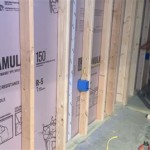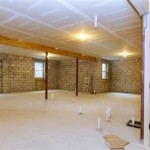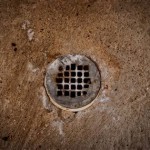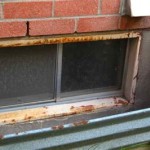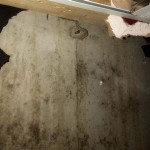How to Repair Hairline Cracks in Basement Walls
Hairline cracks in basement walls are a common sight, often appearing as thin, spiderweb-like lines. While they may seem insignificant, these cracks can be a sign of underlying issues and should not be ignored. Left unaddressed, they can widen over time, leading to structural problems and potential water damage. This article will guide you through the process of repairing hairline cracks in your basement walls, ensuring a safe and structurally sound foundation for your home.
Understanding the Cause
Hairline cracks can arise from various causes, including:
- Foundation settlement: As the soil beneath your foundation shifts, it can put pressure on the walls, causing hairline cracks. This is particularly common in older homes or those built on unstable soil.
- Thermal expansion and contraction: Fluctuating temperatures can cause concrete to expand and contract. This constant movement can lead to hairline cracks, especially in areas with large temperature swings.
- Moisture movement: Moisture in the soil can also cause the foundation to shift and expand, leading to hairline cracks. This is common in areas with high humidity or poor drainage.
- Construction defects: Improper construction techniques, such as inadequate reinforcement or insufficient concrete mix, can create weaknesses in the foundation, making it more susceptible to cracking.
Assessing the Crack
Before attempting to repair hairline cracks, it's crucial to assess their severity and potential underlying causes. Here's how to do it:
- Examine the crack's width: Use a ruler or a coin to measure the crack's width. Hairline cracks are typically less than 1/8 inch wide.
- Check for movement: Observe the crack over time to see if it is widening or changing shape. This could indicate a more serious problem.
- Look for other signs of damage: Inspect the surrounding area for signs of moisture, water stains, or other structural defects.
- Consult a professional: If the crack is wider than 1/8 inch, shows movement, or is accompanied by other signs of damage, it's best to consult a structural engineer or a foundation specialist for a professional evaluation.
Repairing Hairline Cracks
If the hairline crack is stable and not showing signs of movement, you can repair it yourself using the following steps:
- Clean the crack: Use a wire brush or a vacuum cleaner to remove any loose debris or dust from the crack.
- Apply sealant: Fill the crack with a suitable sealant, such as a crack filler, epoxy, or polyurethane caulk. Choose a product specifically designed for concrete and masonry repairs.
- Smooth the sealant: Use a putty knife or a damp sponge to smooth out the sealant and create a seamless finish.
- Paint the crack: Allow the sealant to cure completely according to the manufacturer's instructions. Then, paint the crack with a matching paint color to blend it in with the wall.
Preventing Future Cracks
While repairing existing cracks is important, proactive measures can help prevent future hairline cracks from appearing. Here are some tips to consider:
- Maintain proper drainage: Ensure that rain water and melted snow are diverted away from the foundation. Install gutters and downspouts and make sure they are functioning properly.
- Address moisture problems: Identify and address any sources of moisture around the foundation, such as leaks or poor ventilation.
- Control humidity: Install a dehumidifier in the basement to control humidity levels. This can help prevent moisture from damaging the foundation.
- Regular inspections: Perform regular inspections of your basement walls to identify any new cracks or changes in existing ones. Early detection can prevent a minor crack from becoming a major problem.
Hairline cracks in basement walls can be a sign of underlying issues and require timely attention. By understanding the causes, assessing the severity, and implementing effective repair and prevention techniques, you can ensure the structural integrity of your basement and maintain the overall safety of your home.

Foundation Crack Repair How To Permanently Fix

Basement Wall Crack Causes Symptoms And When To Worry

10 Types Of Basement Foundation Cracks You Should Know

10 Types Of Basement Foundation Cracks You Should Know

Foundation Crack Repair Basement Wall Floor Leak Fix Maine Crackx

Infrastruct Fix Basement Leaks And Wall Cracks With Prime Resins 900xlv Foam

Diy Foundation Crack Repair Kit Urethane Radonseal

How To Repair Leaking Hairline Basement Concrete Wall Cracks Using The Acta Leak Kit

Foundation Repair Repairing Wall Cracks

Cracked Walls 101 Types Causes And Fixes
Related Posts

